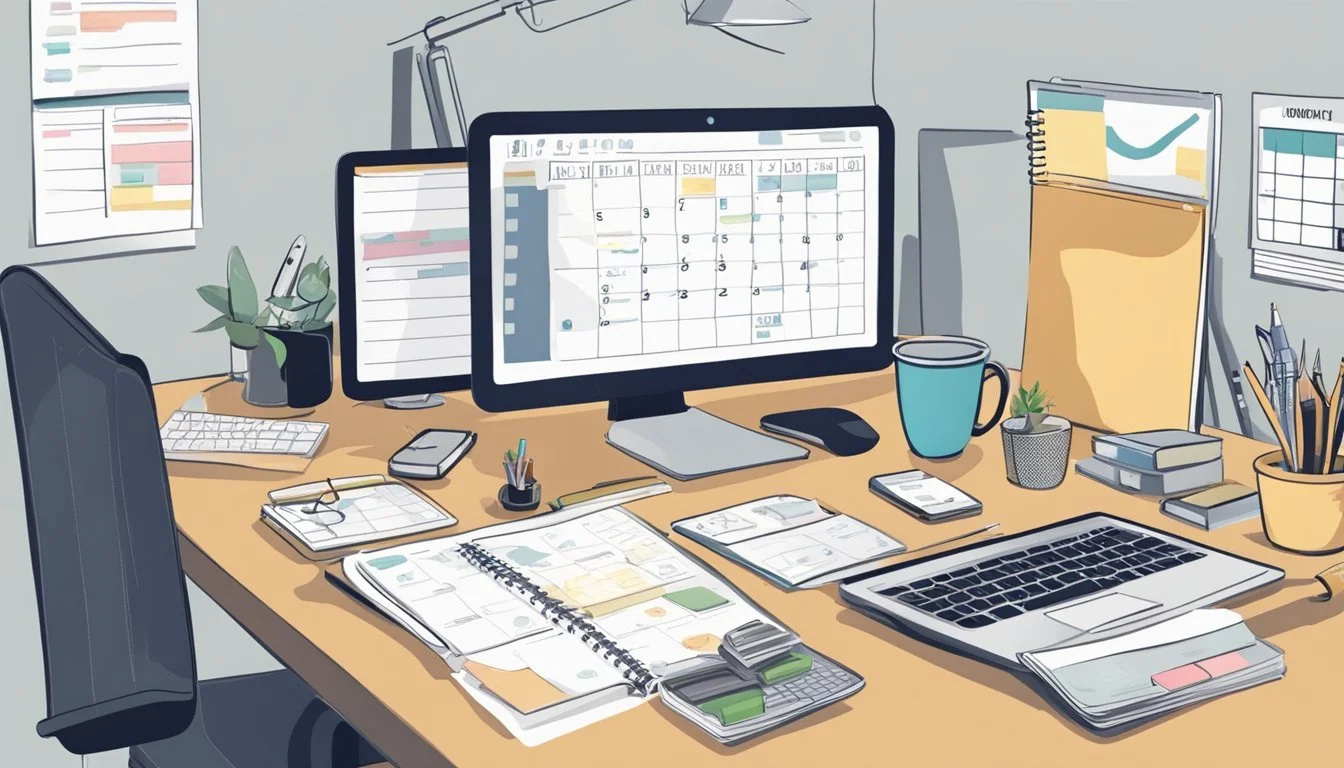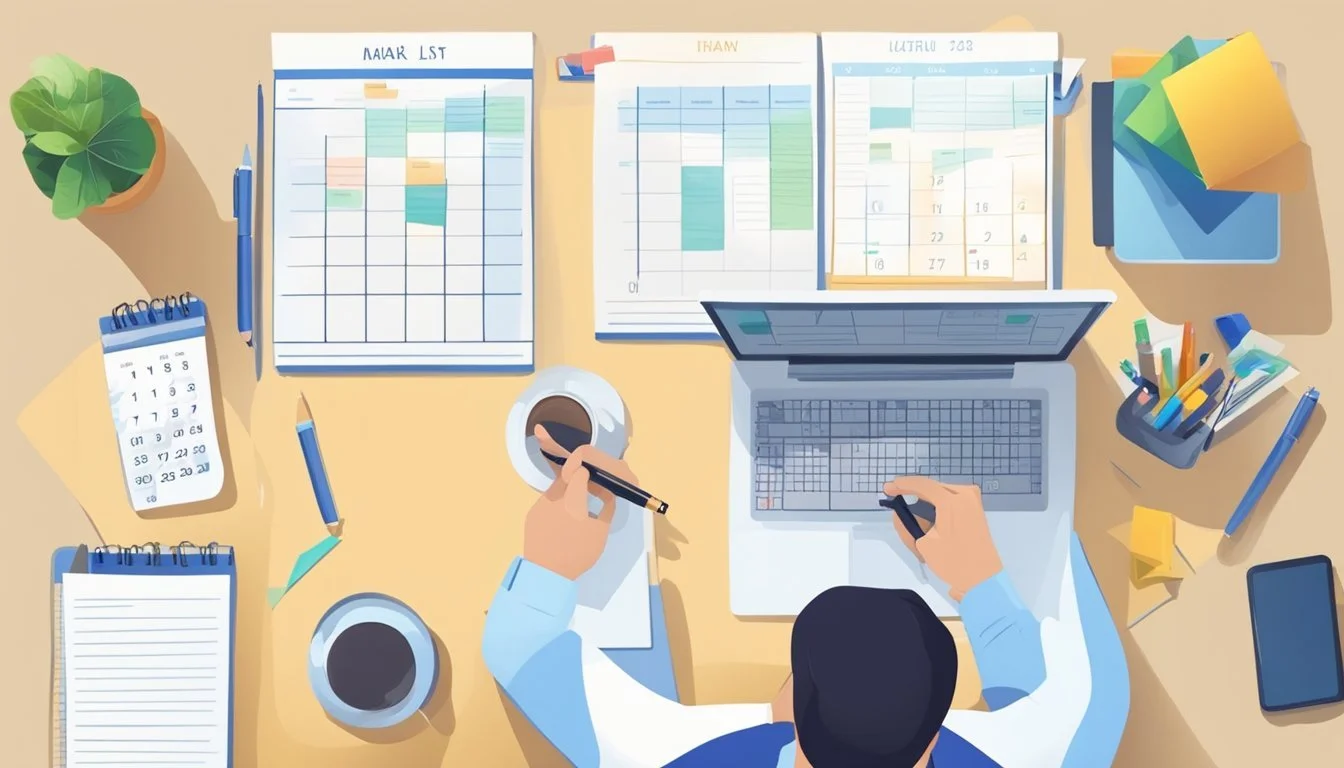5 Essential Time Management Techniques for ADHD Adults
Boost Productivity and Focus
Time management can be a significant challenge for adults with Attention Deficit Hyperactivity Disorder (ADHD). Many individuals with ADHD struggle with estimating task durations, staying focused, and prioritizing effectively. These difficulties often lead to missed deadlines, increased stress, and a sense of being overwhelmed by daily responsibilities.
Implementing specific time management techniques can greatly improve productivity and reduce stress for adults with ADHD. By adopting strategies tailored to their unique needs, individuals can better navigate their daily tasks, meet obligations, and achieve their goals. This article explores five essential time management techniques that can help adults with ADHD take control of their schedules and enhance their overall quality of life.
1) Prioritize Tasks Using the Eisenhower Matrix
The Eisenhower Matrix is a powerful time management tool for ADHD adults. It helps organize tasks based on their urgency and importance.
This method divides tasks into four categories: urgent and important, important but not urgent, urgent but not important, and neither urgent nor important.
Urgent and important tasks require immediate attention. Important but not urgent tasks can be scheduled for later. Urgent but not important tasks can often be delegated.
Tasks that are neither urgent nor important can be eliminated or minimized. This helps ADHD adults focus on what truly matters and avoid wasting time on less productive activities.
To use the Eisenhower Matrix, list all tasks and assign them to the appropriate quadrant. This visual representation makes it easier to prioritize effectively.
ADHD adults can benefit from this structured approach to task management. It reduces overwhelm and improves focus on high-priority items.
Regular use of the Eisenhower Matrix can lead to better time management skills and increased productivity. It encourages a proactive rather than reactive approach to daily tasks.
2) Implement the Pomodoro Technique
The Pomodoro Technique is a time management method that can be particularly beneficial for adults with ADHD. This technique involves breaking work into focused intervals, typically 25 minutes long, followed by short breaks.
To implement the Pomodoro Technique, start by selecting a task from your to-do list. Set a timer for 25 minutes and focus solely on that task until the timer rings. During this time, avoid all distractions and give the task your full attention.
When the timer goes off, take a 5-minute break. Use this time to stretch, grab a drink, or do something enjoyable. After the break, begin another 25-minute work session.
After completing four Pomodoros, take a longer break of 15-30 minutes. This extended break helps prevent burnout and maintains productivity throughout the day.
For individuals with ADHD, the Pomodoro Technique can help improve focus and reduce the impact of distractions. It provides a structured approach to tasks, making them feel more manageable and less overwhelming.
Experiment with different work and break durations to find what works best. Some people may prefer shorter work periods of 15-20 minutes, while others might extend them to 30-35 minutes.
3) Utilize Time Blocking for Daily Activities
Time blocking is a powerful technique for ADHD adults to manage their daily activities effectively. This method involves dividing the day into specific time slots and assigning tasks to each block.
To implement time blocking, start by creating a schedule that includes both work and personal activities. Dedicate specific time periods for important tasks, meetings, and even breaks.
Color-coding different types of activities can make the schedule visually appealing and easier to follow. Use digital tools or a physical planner to keep track of time blocks and tasks.
When creating time blocks, consider personal energy levels and peak productivity times. Assign challenging tasks to periods when focus tends to be highest.
Flexibility is key for ADHD individuals. Allow buffer time between blocks to account for unexpected interruptions or tasks that may take longer than anticipated.
Review and adjust time blocks regularly to ensure they remain effective. This technique helps create structure and reduces the overwhelm often associated with a long to-do list.
4) Set Clear and Realistic Goals
Setting clear and realistic goals is crucial for adults with ADHD to manage their time effectively. By breaking larger tasks into smaller, manageable steps, individuals can reduce overwhelm and increase productivity.
Start by identifying specific, achievable objectives. Instead of vague goals like "get organized," aim for concrete targets such as "organize desk drawers by Friday."
Use the SMART criteria to structure goals: Specific, Measurable, Achievable, Relevant, and Time-bound. This framework helps create goals that are clear and attainable within a defined timeframe.
Write goals down and display them prominently. Visual reminders can help maintain focus and motivation. Consider using a goal-tracking app or journal to monitor progress.
Prioritize goals based on importance and urgency. Focus on tasks that align with long-term objectives and have the most significant impact on daily life.
Be flexible and adjust goals as needed. Regularly review and update objectives to ensure they remain relevant and realistic. Celebrate small victories along the way to maintain momentum and boost confidence.
5) Use Digital Tools Like Todoist and Trello
Digital tools can significantly aid ADHD adults in managing their time effectively. Todoist and Trello are two popular options that offer unique features for task organization and productivity.
Todoist excels in creating and managing to-do lists. It allows users to set priorities, deadlines, and reminders for tasks. The app's clean interface and cross-platform synchronization make it easy to stay on top of responsibilities across devices.
Trello utilizes a visual board system for task management. Users can create cards for tasks and move them between different columns representing stages of completion. This visual approach can be particularly helpful for ADHD individuals who prefer a more graphical representation of their workload.
Both tools offer collaboration features, enabling users to share tasks and projects with others. This can be beneficial for ADHD adults working in team environments or those who need accountability partners.
Integrating these digital tools into daily routines can help ADHD adults stay organized, prioritize tasks, and manage their time more efficiently. By leveraging the strengths of Todoist and Trello, users can create a personalized system that addresses their specific needs and challenges.
Understanding ADHD and Time Management
Adults with ADHD often struggle with time perception and management. These challenges can impact daily functioning and productivity, but effective strategies can help overcome them.
The Importance of Time Management for ADHD Adults
Time management skills are crucial for ADHD adults to navigate personal and professional responsibilities. Proper time management can reduce stress, improve productivity, and enhance overall quality of life. It helps individuals with ADHD stay organized, meet deadlines, and maintain focus on important tasks.
Effective time management techniques allow ADHD adults to break down complex projects into manageable steps. This approach prevents overwhelm and procrastination. By implementing structured routines and utilizing tools like calendars and reminders, ADHD adults can better track appointments and commitments.
Time management skills also support work-life balance. They enable individuals to allocate time for self-care, hobbies, and relationships alongside professional obligations.
Common Time Management Challenges
ADHD adults often experience "time blindness," a difficulty perceiving the passage of time accurately. This can lead to underestimating task durations and missing deadlines. Time blindness may cause ADHD individuals to hyperfocus on activities, losing track of other responsibilities.
Task initiation and completion present significant hurdles. ADHD adults may struggle to start important tasks or become easily distracted, leaving projects unfinished. Prioritization can be challenging, with difficulty distinguishing between urgent and non-urgent matters.
Procrastination is a common issue, often stemming from anxiety or perfectionism. ADHD adults may delay tasks until the last minute, creating unnecessary stress. Organizational challenges, such as misplacing important items or forgetting appointments, can further complicate time management efforts.
Difficulty saying "no" to requests can lead to overcommitment and time mismanagement. ADHD adults may take on too many responsibilities, leaving insufficient time for essential tasks.
Implementing Effective Strategies
Successful time management for adults with ADHD requires implementing practical strategies tailored to their unique needs. These techniques help improve focus, organization, and productivity.
Setting Realistic Goals
Adults with ADHD benefit from setting clear, achievable goals. Break larger tasks into smaller, manageable steps. Use the SMART criteria: Specific, Measurable, Achievable, Relevant, and Time-bound.
Prioritize tasks based on importance and urgency. Create a to-do list with no more than 3-5 items per day to avoid feeling overwhelmed.
Regularly review and adjust goals as needed. Celebrate small victories to maintain motivation and build confidence.
Using Visual Aids and Timers
Visual cues and timers can significantly enhance time awareness for individuals with ADHD. Use colorful calendars, planners, or digital apps to track appointments and deadlines.
Implement the Pomodoro Technique: work for 25-minute intervals followed by short breaks. This method helps maintain focus and prevents burnout.
Set alarms or use time-tracking apps to stay on schedule. Visual timers, like sand timers or digital displays, provide tangible representations of time passing.
Creating Structured Routines
Establishing consistent routines helps adults with ADHD navigate daily tasks more efficiently. Develop morning and evening rituals to bookend the day.
Designate specific times for important activities like work, exercise, and leisure. Stick to a consistent sleep schedule to improve overall functioning.
Use checklists for repetitive tasks to reduce cognitive load. Place frequently used items in designated spots to minimize time spent searching.
Regularly evaluate and adjust routines to ensure they remain effective and aligned with changing needs and priorities.
Building Sustainable Habits
Creating lasting habits is crucial for ADHD adults to manage time effectively. Consistency and regular progress tracking form the foundation for building sustainable routines.
Developing Consistency
Consistency is key for ADHD adults to establish time management habits. Start small by choosing one or two habits to focus on initially. Set specific times and locations for these activities to create triggers for the desired behavior.
Use visual reminders like sticky notes or phone alerts to prompt action. Pair new habits with existing routines to leverage established patterns. For example, check your calendar while drinking morning coffee.
Celebrate small wins to reinforce positive behaviors. Reward yourself for sticking to new habits, even if progress seems slow at first. Be patient and persistent, as it typically takes several weeks for habits to become automatic.
Tracking Progress and Adjustments
Regular monitoring helps ADHD adults stay on track with time management habits. Use a simple habit tracker app or journal to record daily progress. This provides a visual representation of consistency and helps identify patterns.
Set realistic milestones and review progress weekly. Adjust goals or methods as needed based on what's working and what's not. Be flexible and willing to experiment with different approaches.
Enlist support from friends, family, or a coach to provide accountability. Share progress and challenges with a trusted ally who can offer encouragement and feedback.
Regularly reassess habits to ensure they continue to serve your needs. As circumstances change, be prepared to adapt or replace habits that are no longer effective.


